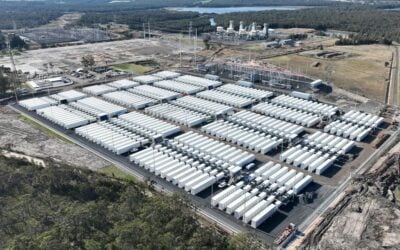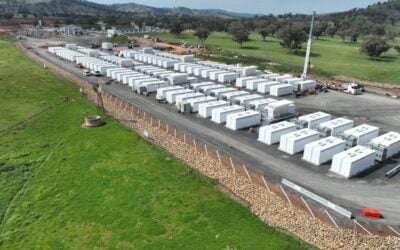Safety in the growing energy storage space is a key challenge, perhaps more in terms of the way the industry is perceived rather than problems with its track record in that area. Image: 24 M facebook page.
A new report from Australia identifying gaps in safety practices for energy storage technologies has recommended that improving knowledge of safety hazards and renovating standards is essential to the storage industry’s integrity and future growth.
The report compiled by Australia’s science agency, Commonwealth Scientific and Industrial Research Organisation (CSIRO), investigates safety issues and regulations for battery technologies of 1-200kWh capacity that are likely to have an impact on the Australian market. These include lead-acid, lithium-ion, nickel-cadmium, nickel metal hydride, flow and sodium-ion analogue batteries. Australia has already been tipped to make big inroads in the energy storage sector in the near future.
Safety is a key challenge in energy storage, especially for lithium-ion batteries, which suffered from an image problem after reports of Boeing 787 Dreamliner commercial jets having electrical problems caused by their lithium-ion batteries in their first year of service in 2013. Furthermore, CSIRO’s report has found that there is no current consensus on the correct method to extinguish a lithium-ion battery fire.
The new study, which received funding support from the Australian Renewable Energy Agency (ARENA) seeks to address safety issues as early as possible, with the expectation that the uptake of battery storage in Australia will follow a rapid growth pattern similar to that of solar PV, or even quicker.
Try Premium for just $1
- Full premium access for the first month at only $1
- Converts to an annual rate after 30 days unless cancelled
- Cancel anytime during the trial period
Premium Benefits
- Expert industry analysis and interviews
- Digital access to PV Tech Power journal
- Exclusive event discounts
Or get the full Premium subscription right away
Or continue reading this article for free
Last year German solar industry association, BSW Solar, created an extensive report on safety for lithium-ion battery-based energy storage systems for home use, for the same reasons. The German storage market was rapidly maturing, but standardisation of safety rules was still being developed.
There are standards already in place for battery installations used in off-grid installations, including households, in Australia. However there is concern that these standards have fallen behind the fast-moving technological trends in the sector.
Meanwhile, CSIRO has claimed that if Australia’s domestic and commercial battery storage industry fails to invest in education, training, standards and improved technology, it may perform “below its future potential”.
The report found various issues including:
Lack of knowledge on how to care for and operate storage systems safely
Insufficient accreditation and training for designers and installers
Lack of standards for battery system disposal and recycling
Emergency response sector has limited education on how to deal with energy storage incidents
Insufficient reporting and recording of incidents
As a result CSIRO recommended improving access to information on storage operations for consumers, designers and installers. It also called for accreditation and training for designers and installers of domestic and small, commercial-scale energy storage systems.
These initiatives would come alongside the establishment of a set of best practices for the battery storage industry and the introduction of an incident-reporting database for energy storage systems in Australia.
The report also called for a lithium-ion battery recycling initiative, because it has been particularly difficult to evaluate the recycled value of components within lithium-ion batteries due to a “lack of standardisation among battery chemistries”.
Australia’s Clean Energy Council (CEC) said many of the report recommendations are being considered through its Energy Storage Roadmap. For example it recently launched its own accreditation programme for battery storage system installers. However, CEC noted that some recommendations would require government leadership.
CSIRO and CEC have now also prepared a guide for consumers and small businesses, which explains best safety practices for installation and use of these battery storage systems.
Last Month, PV Tech Storage reported on a UK initiative to provide codes of best practise in the selling and installation of PV systems paired with electricity storage. Installer Martin Cotterell, head of Sundog Energy, and veteran of the UK solar industry, who was writing the Codes of Practise document, claimed that standardised information is critical, especially as the public is becoming more interested in energy storage with the recent media interest in battery providers such as Tesla.
US analysis firm GTM Research also published the latest commentary highlighting the significant potential in Australia for energy storage, driven by the success of its PV industry. It predicted that by 2020, Australia will be installing 244MW of storage capacity on a yearly basis, which will make the market worth US$448 million in five years’ time.
This followed a host of recent reports highlighting Australia’s potential, including one from Australian crowd-funded non-profit organisation Climate Council, technical services company AECOM – commissioned by Australia’s Renewable Energy Agency (ARENA) – and more recently from the Australian Energy Storage Council, an offshoot of the Australian Solar Council.





